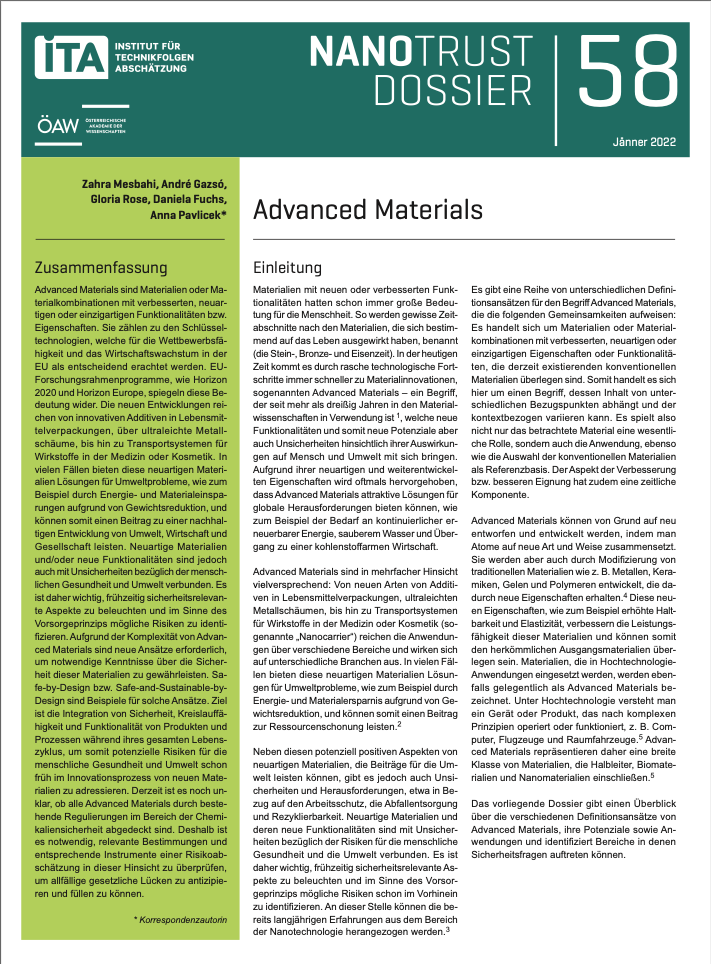 |
 |
Institut für Technikfolgen-Abschätzung
ITA Nanotrust Dossiers
Markus Scharber,
Valerie Rodin,
Simon Moser,
Sabine Gressler,
Florian Part,
Anna Pavlicek,
Daniela Fuchs,
Niyazi Serdar Sarıçiftçi,
Johannes Lindorfer,
Eva-Kathrin Ehmoser
doi: 10.1553/ita-nt-056en
Abstract:
To achieve the 2050 climate targets set out in the Paris Agreement, novel “emerging photovoltaics” (EPVs) that enable flexible, ultrathin and, above all, lightweight photovoltaic (PV) modules will be used alongside classic siliconbased technologies. Innovative materials, socalled “advanced materials”, open up new application areas and possibilities. Such novel PV systems are based on, for example, perovskite semiconductors, quantum dots, organic polymers or dyes, all of which can be produced easily and cost-effectively. Besides traditional power generation in the form of groundmounted and roofmounted systems, they open up new fields of application such as e.g. portable small devices, building-integrated power generation on facades or window surfaces, or in the transport industry. However, before widespread commercial use is possible, some research and development work is still necessary, especially where increased efficiency and service life are concerned. Since the PV market is currently almost exclusively supplied by silicon-based technologies, and because EPVs do not hold a significant market share, it is not possible to derive future market trends from previous or current ones. Instead, they must be estimated on the basis of existing market segments into which the technology can potentially penetrate. It is necessary to differentiate between application areas where power generation is the main focus and those where local energy supply by PV is the goal, but where the solar cells must fulfil additional functions. As a result, the benefit of EPVs does not lie exclusively in electricity generation per se, but in the possibilities opened up by a targeted local power supply, not taking into account electricity grids.
2021/12/20 08:35:24 Document Date:
2021/12/20 08:00:00 Object Identifier:
0xc1aa5576 0x003d1a97
Rights:All rights reserved.For questions regarding copyright and copies please contact us by email.Das NanoTrust-Team bietet an dieser Stelle in loser Folge sog.
Dossiers an,
die in leicht-fasslicher, aber wissenschaftlich fundierter Weise auf ca.
drei bis sechs Seiten den aktuellen Wissensstand zu den aktuellen Themen der
aufkommmenden Nanodebatte zusammenfassen.
|



 Home
Home Print
Print
 References
References
 Share
Share
